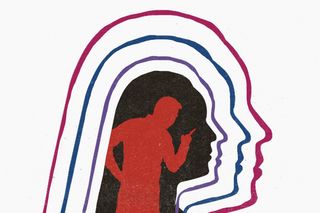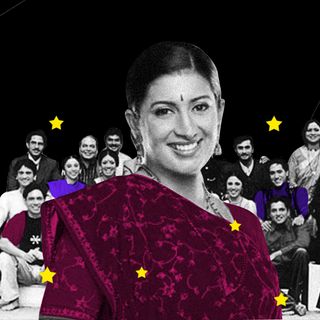
The Stereotype That Abusers Are ‘Bad’ People Can Prevent Survivors From Recognizing Real‑Life Abuse
Abusers can be ‘good’ in many other facets of their lives, preventing their partners from recognizing emotional abuse for what it is.

This is the third article in a three-part series about the psychology behind survivors of abuse often being unable to escape — or even recognize — the abuse within their relationships.
Leaving one’s abusive partner isn’t easy due to a variety of factors, ranging from financial and cultural constraints, to social shaming, to the emotional attachment one may feel towards their abusive partner — and finally, to the fact that survivors can struggle to even recognize their experiences as abusive. Pop culture, and its unrealistic portrayal of abuse, often plays a role in the latter.
On the one hand, countless movies like Daraar, Daman, Agni Sakshi, and Mehndi try to depict justice being done to survivors of abuse by depicting their “villainous” abusers dying in a moment of cathartic glory. On the other hand, more recent movies like Bulbul and Udaan — which don’t end in the abuser’s death — still portray their characters the same way: as one-dimensionally “bad” people. In Mehndi, for instance, not only was Rani Mukherji’s on-screen husband abusive to her, but was also violent towards the movie’s only queer character as well as his parents, committed bribery, and harassed women. But by portraying abusers as people whose only character trait is being abusive, cinema tends to promote harmful stereotypes about abuse.
The former lot suggests the only recourse available to survivors is to take law and order into their own hands, and confront their abuser — except, survivors don’t often want confrontations; they just want the trauma to end, according to Diane Shoos, an associate professor at the Michigan Technical University in the U.S., who wrote a book on the portrayals of domestic abuse in cinema, and its impact on how people perceive abuse.
Second, the very idea that an abuser is evil incarnate — so much so that they don’t deserve to live — can actually prevent survivors from recognizing abuse, let alone leaving their abusive partner. Human beings — even abusers — are not one-dimensional characters. In real life, within intimate relationships, even abusive ones, people are privy to multiple facets of their partners — including vulnerable aspects of their personality. This can make it difficult for them to reconcile their partner’s image with that of a stereotypical abuser.
Samantha, 25, found it difficult to recognize the emotional abuse she faced in her relationship because her partner had the “capacity for empathy towards different causes.” He joined her in feeding strays and caring for them, opened his home to friends who were new to the city so that they had a place to stay until they found their own house, and seemed accommodating of people. “He genuinely seemed to care,” she recalls.
Related on The Swaddle:
We’ve Overused the Word ‘Abuse.’ Here’s Why It’s Hurting the Fight For Gender Equality.
We’re resistant to the idea that the person we love might not be the right person for us. “We don’t like information that doesn’t align with what we would like to believe,” says psychotherapist Zohra Master, an associate fellow and supervisor from the Albert Ellis Institute. She explained that this leads to a psychological phenomenon called cognitive dissonance — where even if one recognizes harmful patterns in the behavior of their partner, who they otherwise believe is “an amazing person,” they find ways to rationalize the behavior and tell themselves it seems problematic only when taken “out of context,” that it was “just a one-time thing” and they were “just stressed,” or even that it’s not “as bad as relationships of other people” they know.
This inherent resistance is exacerbated by the unrealistic notion we have of abusers, which perpetrators of abuse don’t generally embody simply by virtue of the fact that they’re human beings and, therefore, have multi-faceted personalities. Because her partner seemed like a “good person” outside of the relationship, “I blamed his behavior towards me on his negative experiences in his past relationship… I thought it would get better if I behaved differently. But it was never enough,” Samantha says. “Only when I went to the psychiatrist did I find out that I was being abused.”
As Master notes, “someone can be a really great person, and behave like a really shitty boyfriend — both at the same time.” She believes it’s helpful for people to remember that their partner doesn’t have to be an absolutely awful person for them to pull the plug on their relationship.
Perpetrators of abuse can also be “very charismatic, have a circle that appears to love them,” says Samriti Makkar Midha, a Mumbai-based psychotherapist. This can lead one to question whether they’re the ones overthinking their partner’s behavior — especially since they don’t see their partner fit into the image of a stereotypical abuser.
What complicates this further is that media portrayals tend to normalize abusive behavior — especially the kind that seeks to control women — when they’re not demonizing it straightaway. Pop culture has often condoned the attempt to control one’s partner and violate their personal boundaries as an expression of love across movies like Tere Naam, Rehnaa Hai Terre Dil Mein, and more recently Kabir Singh — whichrationalized abuse by redeeming a “violent, destructive misogynist” as a “man with ‘a good heart’ who ‘loves purely’ and ‘wears his emotions on his sleeve’,” as BBC News described it.
This normalization of abusive behavior extends beyond the reels, and into real life as well. “When a woman is ‘questioned’ about her whereabouts — like, ‘where were you? who were you talking to? why were you out so late?’ — it seems normal because she has probably grown up seeing men in her family ask these questions of their female partners,” Midha explains. This can lead to survivors being confused as to whether what they’re experiencing is abuse, or if they’re overreacting to their partner’s care and affection.
Related on The Swaddle:
Why Sexual Abuse Survivors Often Have Distorted or Delayed Memories
Cinema tends to either normalize abuse, or demonize it completely. However, in the non-fictional world, abuse often exists between these two extremes — unlike our understanding of abuse, which can be largely informed by pop culture. But “goodness” and abuse are not mutually exclusive.
It’s not just the one-dimensional portrayal of an abuser that can make it difficult for survivors to recognize abuse within their relationships — the way people have been conditioned to think of survivors plays a role here, too. The idea that a person experiencing abuse is helpless, destitute, and dependent upon their abuser’s goodwill can also make it challenging for someone actually experiencing abuse to recognize it — if they don’t fit into that stereotype and, according to Midha, that is a common occurrence.
“I’ve had clients who are doing so well for themselves — they’re financially independent, in positions of power and authority at work, come off as confident — but are experiencing abuse at home,” she notes.
In our rush to brand abusers as nothing but ostensibly diabolic, and survivors as “bechaari” — society may have denied survivors the truth about their abusers: like any other human being, they, too, exist in shades of gray. Doing so has not only resulted in survivors being unable to recognize the abuse meted out to them, but also allowed perpetrators of abuse to go about life without being called out for their behavior simply because they might feed stray animals once in a while, volunteer at NGOs, or in the case of Kabir Singh, only ever love one woman.
Devrupa Rakshit is an Associate Editor at The Swaddle. She is a lawyer by education, a poet by accident, a painter by shaukh, and autistic by birth. You can find her on Instagram @devruparakshit.
Related


Woe Is Me! “My Boyfriend Wants Me to Block a Guy Friend. What Should I Do?”
